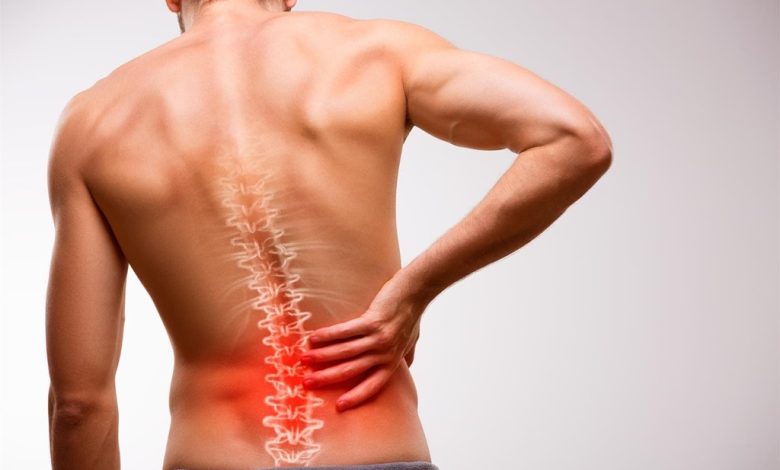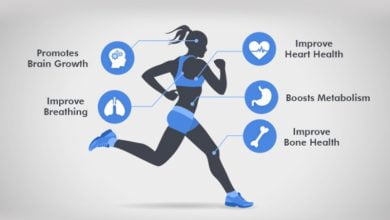Unlocking the Secrets to Relieving Lower Back Pain: A Comprehensive Guide to Finding Relief and Regaining Mobility

Introduction
Understanding and Addressing Lower Back Pain: A Comprehensive Guide
Lower back pain is a prevalent and often debilitating condition that affects millions of people worldwide. Whether acute or chronic, this type of pain can significantly impact daily activities, mobility, and overall quality of life. However, by understanding the causes, symptoms, and treatment options for lower back pain, individuals can take proactive steps to alleviate discomfort, restore function, and prevent recurrence.Are you tired of living with the constant ache of lower back pain? Does it stop you from doing the things you love and hinder your mobility? If so, you’re not alone. Lower back pain affects millions of people around the world, and finding effective relief can be a challenge. But fear not, for this comprehensive guide is here to unlock the secrets to relieving lower back pain and help you regain your mobility.In this article, we will delve into the causes of lower back pain and explore different treatment options. From physical therapy and exercises to natural remedies and lifestyle changes, we will provide you with a wide range of strategies to alleviate your discomfort. We will also discuss the importance of maintaining good posture, strengthening your core muscles, and adopting ergonomic practices to support a healthy spine.Whether you have chronic lower back pain or are experiencing occasional flare-ups, this guide is for you. Say goodbye to your back pain and hello to a more active and pain-free life. So, let’s get started on this journey to finding relief and regaining your mobility!
Anatomy of the Lower Back
The lower back, or lumbar region, is a complex structure composed of bones, muscles, ligaments, nerves, and intervertebral discs. Five vertebrae (L1-L5) make up the lumbar spine, which supports the weight of the upper body and facilitates movement, bending, and twisting. The muscles and ligaments surrounding the lumbar spine provide stability and support while allowing for a wide range of motion.
Common Causes of Lower Back Pain
Lower back pain can arise from various factors, including:
Muscle Strain:
Overuse, improper lifting techniques, or sudden movements can strain the muscles of the lower back, leading to pain and stiffness.
Herniated Disc:
A herniated or bulging disc occurs when the soft inner core of an intervertebral disc protrudes through the tough outer layer, causing pressure on nearby nerves and resulting in pain, tingling, or numbness.
Degenerative Disc Disease:
With age, the intervertebral discs may lose hydration and elasticity, leading to degeneration, decreased disc height, and potential nerve compression.
Spinal Stenosis:
This condition involves the narrowing of the spinal canal, which can compress the spinal cord or nerve roots, resulting in pain, weakness, or numbness in the lower back and legs.
Osteoarthritis:
Degenerative changes in the joints of the spine, known as osteoarthritis, can cause inflammation, stiffness, and pain in the lower back.
Scoliosis:
Abnormal curvature of the spine, such as scoliosis, can contribute to uneven stress on the vertebrae and surrounding structures, leading to pain and discomfort.
Traumatic Injury:
Falls, car accidents, sports injuries, or other traumatic events can cause fractures, sprains, or strains in the lower back, resulting in acute pain and limited mobility.
Symptoms of Lower Back Pain
Diagnosis and Treatment
Diagnosing the underlying cause of lower back pain typically involves a comprehensive medical history, physical examination, and diagnostic tests, such as X-rays, MRI, or CT scans. Treatment options may vary based on the severity and cause of the pain but often include:
Rest and Activity Modification:
Temporary rest and avoidance of activities that exacerbate pain can help alleviate symptoms. However, prolonged bed rest is generally discouraged, as it can lead to muscle weakness and stiffness.
Physical Therapy:
Targeted exercises, stretches, and manual therapy techniques prescribed by a physical therapist can help improve flexibility, strength, and posture, reducing pain and preventing recurrence.
Medications:
Over-the-counter or prescription medications, such as nonsteroidal anti-inflammatory drugs (NSAIDs), muscle relaxants, or analgesics, may provide temporary relief from pain and inflammation.
Injections:
Epidural steroid injections or nerve blocks may be recommended to reduce inflammation and alleviate pain associated with nerve compression or irritation.
Heat and Cold Therapy:
Applying heat packs or ice packs to the affected area can help reduce inflammation, alleviate muscle spasms, and provide temporary pain relief.
Bracing or Support Devices:
Lumbar support belts or braces may offer additional stability and support for individuals with acute or chronic lower back pain.
Alternative Therapies:
Techniques such as acupuncture, chiropractic adjustments, massage therapy, or yoga may complement conventional treatments and provide relief from lower back pain.
In cases where conservative treatments fail to provide adequate relief, surgical intervention may be considered. Surgical options for lower back pain include discectomy, laminectomy, spinal fusion, or artificial disc replacement, depending on the specific diagnosis and individual circumstances.
Prevention Strategies
While it may not always be possible to prevent lower back pain entirely, several strategies can help reduce the risk of developing or exacerbating symptoms:
Maintain a Healthy Weight:
Excess weight can strain the muscles and ligaments of the lower back, increasing the risk of pain and injury. Maintaining a healthy weight through diet and exercise can help reduce stress on the spine.
Practice Good Posture:
Maintain proper posture while sitting, standing, and lifting heavy objects to minimize strain on the lower back. Avoid slouching or arching the back excessively.
Exercise Regularly:
Engage in regular physical activity to strengthen the muscles of the core, back, and legs, which provide support for the spine and help prevent injury.
Use Proper Lifting Techniques:
When lifting heavy objects, bend at the knees and hips, rather than the waist, and use the legs to lift while keeping the back straight.
Stay Active:
Incorporate regular movement and stretching into your daily routine to keep the spine flexible and prevent stiffness. Avoid prolonged periods of sitting or standing in one position.
Invest in Supportive Footwear:
Wearing supportive shoes with adequate arch support can help maintain proper alignment and reduce strain on the lower back.
Quit Smoking:
Smoking can impair circulation and reduce the body’s ability to heal, increasing the risk of disc degeneration and other spinal conditions. Quitting smoking can improve overall spinal health and reduce the risk of lower back pain.
Conclusion
Lower back pain is a common and often debilitating condition that can significantly impact quality of life. By understanding the causes, symptoms, and treatment options for lower back pain, individuals can take proactive steps to alleviate discomfort, restore function, and prevent recurrence. Whether through conservative treatments, lifestyle modifications, or surgical intervention, there are numerous strategies available to help individuals manage lower back pain and improve overall spinal health. By prioritizing self-care, maintaining a healthy lifestyle, and seeking appropriate medical attention when needed, individuals can empower themselves to live a life free from the limitations of lower back pain.
Understanding lower back pain: causes and symptoms
Lower back pain can be caused by various factors, including muscle strain, poor posture, herniated discs, or spinal stenosis. It can also be a result of underlying medical conditions such as arthritis or sciatica. Understanding the causes of your lower back pain is crucial in finding the most effective treatment.The symptoms of lower back pain can vary from mild discomfort to sharp, shooting pains. You may also experience stiffness, limited mobility, or pain radiating down your legs. It’s important to pay attention to these symptoms and seek professional help if they persist or worsen.
The importance of seeking professional help for lower back pain
While occasional lower back pain can often be managed with self-care measures, it’s important to consult a healthcare professional if your pain is persistent or severe. A healthcare provider can perform a thorough evaluation to determine the underlying cause of your pain and recommend appropriate treatment options.Seeking professional help for your lower back pain can also help prevent further complications. They can guide you through exercises, provide pain management techniques, or refer you to a specialist if necessary. Remember, early intervention and proper diagnosis are key to effectively managing lower back pain.Incorporating exercises and stretches, making lifestyle changes, and considering alternative therapies can further enhance your journey to finding relief. Paying attention to ergonomics, posture, and managing lower back pain at work can also make a significant difference.Finally, it’s important to address the psychological and emotional aspects of chronic lower back pain. Seek support, practice stress management techniques, engage in enjoyable activities, and consider therapy to cope with the challenges that chronic pain brings.Remember, everyone’s journey to finding relief may be different. Be patient, listen to your body, and consult with healthcare professionals to find the most suitable approach for your specific condition. With determination and perseverance, you can unlock the secrets to relieving lower back pain and regain your mobility. Say goodbye to your back pain and hello to a more active and pain-free life.
Common treatments for lower back pain: medication, physical therapy, and chiropractic care
When it comes to treating lower back pain, there are several common approaches that healthcare professionals may recommend. One of the first lines of treatment is often medication. Over-the-counter pain relievers such as ibuprofen or acetaminophen can help alleviate mild to moderate pain. In some cases, prescription medications or muscle relaxants may be prescribed.Physical therapy is another effective treatment option for lower back pain. A physical therapist can design a customized exercise program to strengthen your core muscles, improve flexibility, and reduce pain. They may also incorporate techniques such as heat or cold therapy, ultrasound, or electrical stimulation to further alleviate your symptoms.Chiropractic care focuses on the alignment of the spine and nervous system. Chiropractors use manual adjustments or spinal manipulation techniques to relieve pain, improve function, and promote overall wellness. This alternative approach can be particularly beneficial for those with certain conditions, such as herniated discs or sciatica.
Exercises and stretches for lower back pain relief
Exercise plays a crucial role in managing and preventing lower back pain. Strengthening the muscles that support your spine can help alleviate pain and improve mobility. Here are a few exercises and stretches that you can incorporate into your routine:
Partial curls:
Lie on your back with your knees bent and feet flat on the floor. Place your hands behind your head and slowly curl your upper body off the ground, engaging your core muscles. Hold for a few seconds and then lower back down. Repeat 10-15 times.
Cat-camel stretch:
Start on all fours with your hands directly under your shoulders and your knees under your hips. Slowly arch your back upwards like a cat, and then lower your belly towards the ground, forming an arch like a camel. Repeat this movement 10-15 times.
Child’s pose:
Beggin on your hands and knees, then sit back on your heels while extending your arms forward. Rest your forehead on the ground and hold the stretch for 30 seconds to 1 minute. This stretch helps relieve tension in the lower back.
Remember to always consult with a healthcare professional or physical therapist before starting any new exercise program, especially if you have existing back pain or medical conditions.
Lifestyle changes to prevent and manage lower back pain
In addition to exercises and stretches, making certain lifestyle changes can significantly help prevent and manage lower back pain. Here are some tips to consider:
Maintain a healthy weight:
Excess weight can strain your back muscles and contribute to lower back pain. Aim to maintain a healthy weight through a balanced diet and regular exercise.
Practice good posture:
Poor posture can put undue stress on your back, leading to pain. Make a conscious effort to sit and stand with proper posture, keeping your spine aligned and shoulders relaxed.
Take frequent breaks:
If you have a sedentary job, take regular breaks to get up and move around. Prolonged sitting can put strain on your lower back, so it’s important to incorporate movement throughout the day.
Sleep on a supportive mattress:
Investing in a mattress that provides adequate support for your spine can make a significant difference in managing lower back pain. Choose a medium-firm mattress that contours to your body’s natural curves.
Remember, these lifestyle changes may take time to show results. Be patient and consistent in implementing them, and you’ll gradually notice improvements in your lower back pain.
Alternative therapies for lower back pain: acupuncture, massage, and yoga
If you’re looking for alternative therapies to complement traditional treatments, there are several options worth exploring. These therapies can help reduce pain, promote relaxation, and improve overall well-being.
Acupuncture:
This ancient Chinese practice involves inserting thin needles into specific points on the body. Acupuncture is believed to help balance the body’s energy flow and stimulate natural healing. Many people find it effective in relieving lower back pain.
Massage therapy:
Massage can help relax muscles, improve circulation, and reduce tension in the lower back. It can be particularly beneficial for those with muscle-related back pain. Consider seeking a licensed massage therapist experienced in treating lower back pain.
Yoga:
Practicing yoga can improve flexibility, strengthen core muscles, and promote relaxation. Certain yoga poses, such as child’s pose, cat-camel, or downward-facing dog, can specifically target the lower back and provide relief. Join a beginner-friendly yoga class or follow online tutorials designed for back pain relief.
Remember to consult with a qualified practitioner before trying any alternative therapy, as they can provide guidance on the most suitable approach for your specific condition.
Ergonomics and posture: how they affect lower back pain
The way you sit, stand, and move throughout the day can significantly impact your lower back pain. Poor ergonomics and posture can contribute to muscle imbalances, strain on your spine, and increased pain. Here are some tips to improve ergonomics and maintain good posture:
Adjust your chair:
When sitting, ensure that your feet are flat on the floor, your knees are at a 90-degree angle, and your lower back is supported by the chair. If needed, use a cushion or lumbar roll to maintain the natural curve of your spine.
Position your computer:
When using a computer, position the monitor at eye level to avoid straining your neck and upper back. Keep your keyboard and mouse at a comfortable height to prevent unnecessary tension in your lower back and wrists.
Take regular stretch breaks:
Incorporate short stretching breaks throughout the day to loosen up tight muscles and relieve tension in your lower back. Simple stretches like standing up and reaching for the sky or bending forward can help alleviate stiffness.
By paying attention to ergonomics and maintaining good posture, you can reduce the strain on your lower back and minimize the risk of developing or exacerbating pain.
Tips for managing lower back pain at work
For many people, lower back pain is a common complaint that can be exacerbated by long hours spent sitting at a desk. However, there are steps you can take to manage and prevent lower back pain while at work:
Use an ergonomic chair:
Invest in an ergonomic chair that provides proper support for your lower back. Adjust the chair’s height, backrest, and armrests to fit your body’s needs.
Take frequent breaks:
Avoid sitting for prolonged periods by taking regular breaks to stand up, stretch, or take a short walk. Set reminders or use a timer to prompt yourself to move every 30 minutes.
Use a standing desk:
Consider using a standing desk that allows you to alternate between sitting and standing throughout the day. This can help reduce the strain on your lower back and promote better posture.
Practice desk exercises:
Incorporate simple exercises into your work routine, such as neck rolls, shoulder shrugs, or seated twists. These exercises can help alleviate tension and improve blood flow to your lower back.
Remember, it’s important to prioritize your health and well-being, even while at work. By implementing these tips, you can minimize the impact of prolonged sitting and reduce the risk of lower back pain.
Coping with chronic lower back pain: psychological and emotional support
Living with chronic lower back pain can be physically and emotionally challenging. It’s important to acknowledge the psychological and emotional impact that chronic pain can have on your overall well-being. Here are some strategies to help cope with chronic lower back pain:
Seek emotional support:
Reach out to friends, family, or a support group to share your experiences and emotions. Talking to others who understand what you’re going through can provide comfort and validation.
Practice stress management techniques:
Chronic pain can be stressful, so it’s important to find healthy ways to manage stress. Consider incorporating relaxation techniques such as deep breathing, meditation, or mindfulness into your daily routine.
Engage in enjoyable activities:
Despite the limitations imposed by chronic pain, find activities that bring you joy and engage your mind. Whether it’s reading, listening to music, or pursuing a hobby, focusing on positive experiences can help distract from the pain.
Consider therapy:
If chronic pain is impacting your mental health significantly, consider seeking professional therapy. A therapist can help you develop coping strategies, address underlying emotional issues, and improve your overall well-being.Remember, coping with chronic pain is a journey, and it’s important to be patient and kind to yourself. With the right support and strategies, it’s possible to lead a fulfilling life despite chronic lower back pain.
Conclusion: finding long-term relief and regaining mobility
Lower back pain can be a debilitating condition that affects your daily life and overall well-being. However, with the right approach, you can find long-term relief and regain your mobility. By understanding the causes of lower back pain, seeking professional help, and exploring different treatment options, you can take control of your pain and improve your quality of life.Incorporating exercises and stretches, making lifestyle changes, and considering alternative therapies can further enhance your journey to finding relief. Paying attention to ergonomics, posture, and managing lower back pain at work can also make a significant difference.Finally, it’s important to address the psychological and emotional aspects of chronic lower back pain. Seek support, practice stress management techniques, engage in enjoyable activities, and consider therapy to cope with the challenges that chronic pain brings.Remember, everyone’s journey to finding relief may be different. Be patient, listen to your body, and consult with healthcare professionals to find the most suitable approach for your specific condition. With determination and perseverance, you can unlock the secrets to relieving lower back pain and regain your mobility. Say goodbye to your back pain and hello to a more active and pain-free life.




